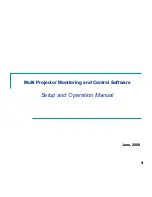
ThinApp User’s Guide
72
VMware, Inc.
RetainAllIcons
The
RetainAllIcons
parameter
keeps
all
of
the
original
icons
of
the
executable
file
listed
in
the
Source
parameter
in
the
application.
The
icons
that
are
not
assigned
to
application
executable
files
reside
in
the
virtual
file
system
of
the
package.
The
RetainAllIcons
parameter
determines
whether
to
copy
the
unused
icons
from
the
virtual
file
system
to
the
executable
file.
To
save
disk
space,
ThinApp
sets
an
initial
value
that
removes
unused
icons
from
the
portion
of
the
executable
file
that
is
visible
to
the
physical
environment.
Examples
You
can
modify
the
RetainAllIcons
parameter
to
keep
all
of
the
original
icons
of
the
application.
[app.exe]
Source=%ProgramFilesDir%\myapp\app.exe
RetainAllIcons=1
Configuring Permissions
You
can
modify
ThinApp
parameters
for
security
tasks
that
define
user
access
to
packages
and
change
Data
Execution
Prevention
(DEP)
protection.
AccessDeniedMsg
The
AccessDeniedMsg
parameter
contains
an
error
message
to
display
to
users
who
do
not
have
permission
to
run
a
package.
ThinApp
sets
an
initial
message
that
notifies
the
user
to
contact
the
administrator.
Examples
You
can
modify
the
AccessDeniedMsg
parameter
to
add
a
technical
support
number.
[BuildOptions]
PermittedGroups=Administrator;OfficeUsers
AccessDeniedMsg=You do not have permission to execute this application, please call support @
1-800-822-2992
AddPageExecutePermission
The
AddPageExecutePermission
parameter
supports
applications
that
do
not
work
in
a
Data
Execution
Prevention
(DEP)
environment.
The
DEP
feature
of
Windows
XP SP2,
Windows
Server 2003,
and
later
operating
system
versions
protects
against
some
security
exploits
that
occur
with
buffer
overflow.
This feature
creates
compatibility
issues.
Windows
turns
off
the
feature
by
default
on
Windows
XP SP2
and
you
can
use
a
machine
‐
specific
opt
‐
in
or
opt
‐
out
list
of
the
applications
to
which
to
apply
DEP
protection.
Opt
‐
in
and
opt
‐
out
policies
can
be
difficult
to
manage
when
a
large
number
of
machines
and
applications
are
involved.
The
AddPageExecutePermission
parameter
instructs
ThinApp
to
add
execution
permission
to
pages
that
an
application
allocates.
The
application
can
run
on
machines
that
have
DEP
protection
enabled
without
modifying
the
opt
‐
out
list.
ThinApp
sets
an
initial
value
of
the
AddPageExecutePermission
parameter
that
prevents
any
change
to
the
DEP
protections.
Examples
You
can
modify
the
AddPageExecutePermission
parameter
to
add
execution
permission
to
pages
that
an
application
allocates.
ThinApp
executes
code
from
memory
pages
that
the
application
specifies.
This
is
useful
for
applications
that
combine
the
program
and
its
data
into
one
area
of
memory.
[BuildOptions]
;Disable some Data Execution protections for this particular application
AddPageExecutionPermission=1
Summary of Contents for THINAPP 4.6 - MIGRATING APPLICATIONS TECHNICAL NOTE
Page 38: ...ThinApp User s Guide 38 VMware Inc...
Page 114: ...ThinApp User s Guide 114 VMware Inc...
Page 136: ...ThinApp User s Guide 136 VMware Inc...
















































